A Look into the Future
A Look into the Future
By Georges Michelson-Dupont, Trustee, Manager of Translations, Urantia Foundation, Recloses, France
Conducting a predictive forecast of the major languages to be spoken in the next eighty years will help Urantia Foundation understand the major translating challenges that face us. We need to ask: What will be the most-spoken languages on Urantia by the year 2100, and by how many people?
These answers will also help our organizations prepare for the challenges of education and dissemination.
We need to combine statistical probabilities regarding the possible evolution of world populations starting at 1950 and projected to 2100 (See the United Nations website at: https://esa.un.org/unpd/wpp/Graphs/Probabilistic/POP/TOT/) - with linguistic probabilities between 1950 and 2100.
For our study, we shall retain the median hypothesis used by analysts of the United Nations.
With the development of commerce, travel, science, and student exchanges, English is becoming the “common language” for international relations, and many countries have adopted English as the second, official, or administrative language.
However, one should not assume, just because someone has learned English as a second language, that he or she is fluent enough to understand the ideas and nuances found in The Urantia Book.
In this presentation, we will assume that people will continue speaking their native language even if English is becoming a second language worldwide.
What is the language situation today on Urantia?
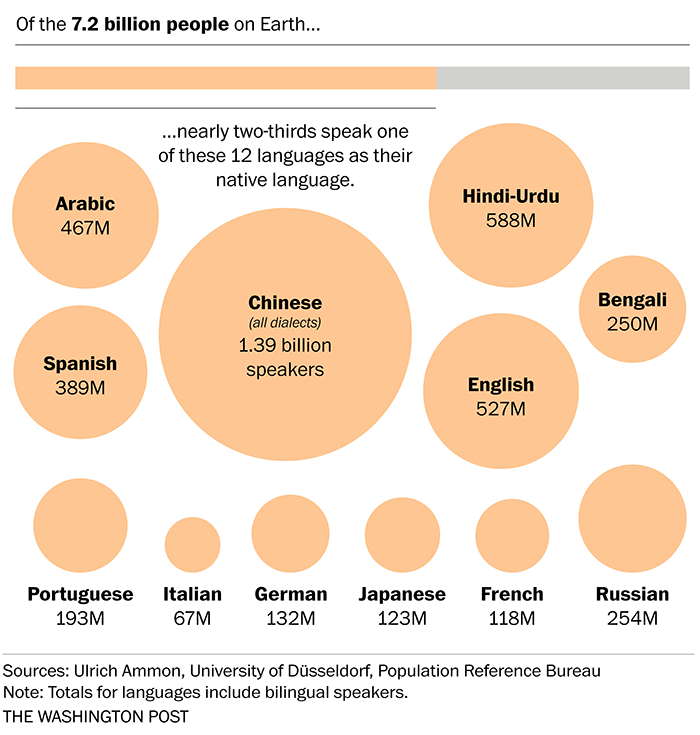
As of today, Chinese is the most spoken language.
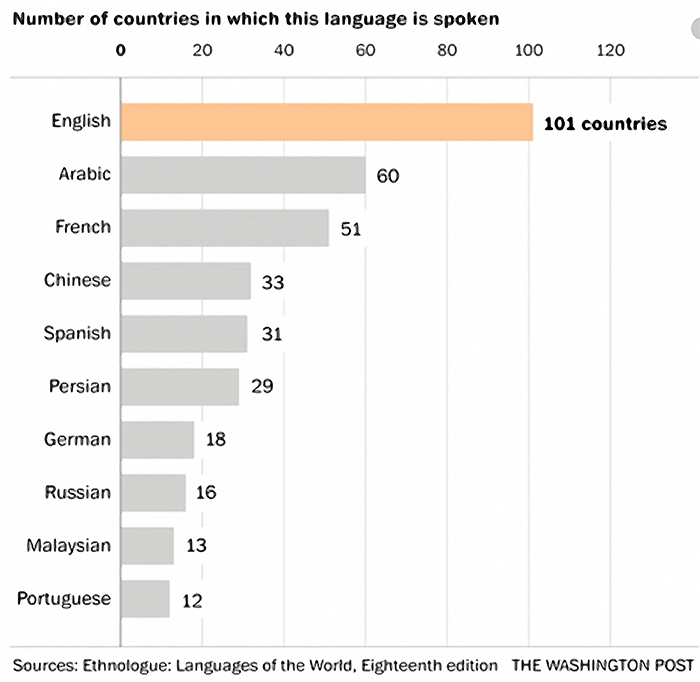
The chart labelled “Number of countries in which this language is spoken” shows that English is spoken in the most countries. This fact, combined with population growth projections and the fact that English is becoming the language that is being adopted worldwide as the common language between speakers whose native languages are different, has a profound effect on language projections for 2100.
What is the language situation in the future?
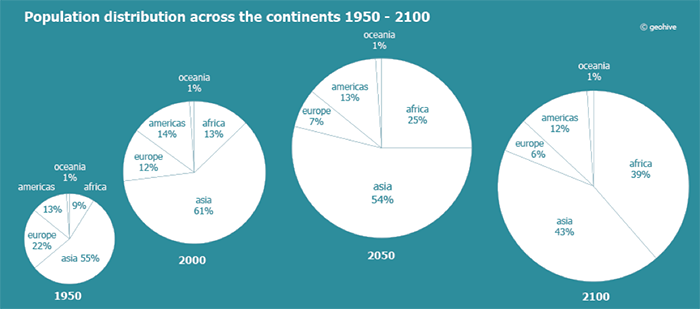
Population growth by Continent 1750—2100 (In %)
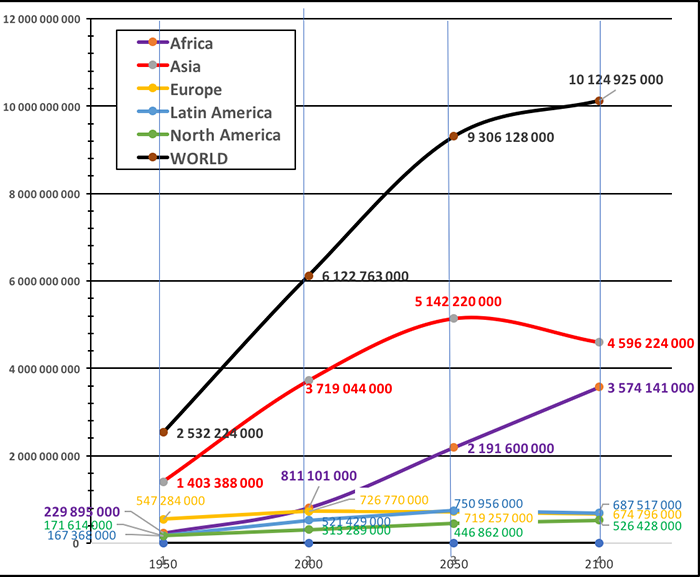
Population growth by Continent 1750—2100 (Trend)
The current and future radical population growth in Africa projects language usage in Africa at 2100 as:
English: 2,286 million; French: 1,263 million; Portuguese: 250 million; Arabic: 245 million.There will also be a decline in Chinese population (as a percentage of the whole). These factors are going to have global impact.
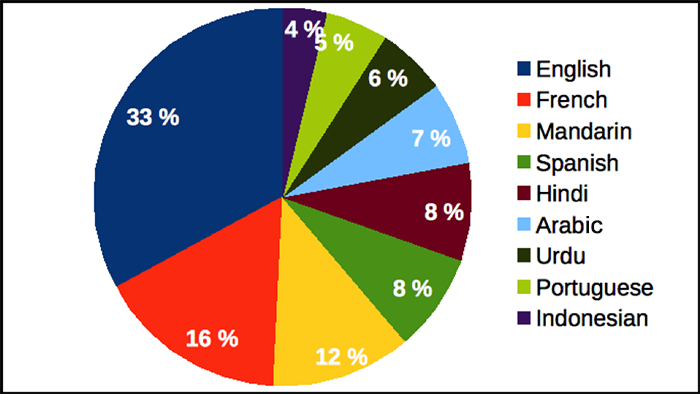
Projected world language usage in 2100
Conclusion
Of the eight non-English languages, Urantia Foundation has already translated The Urantia Book into French, Spanish, and Portuguese. In addition, there are translations for most European languages, including Russian. Chinese, Indonesian, and Arabic are in progress, and should be finished by 2025.
If we were in the year 2100, with the above translations available, 70 percent of the world’s population would have access to the Urantia Revelation in its own language.
